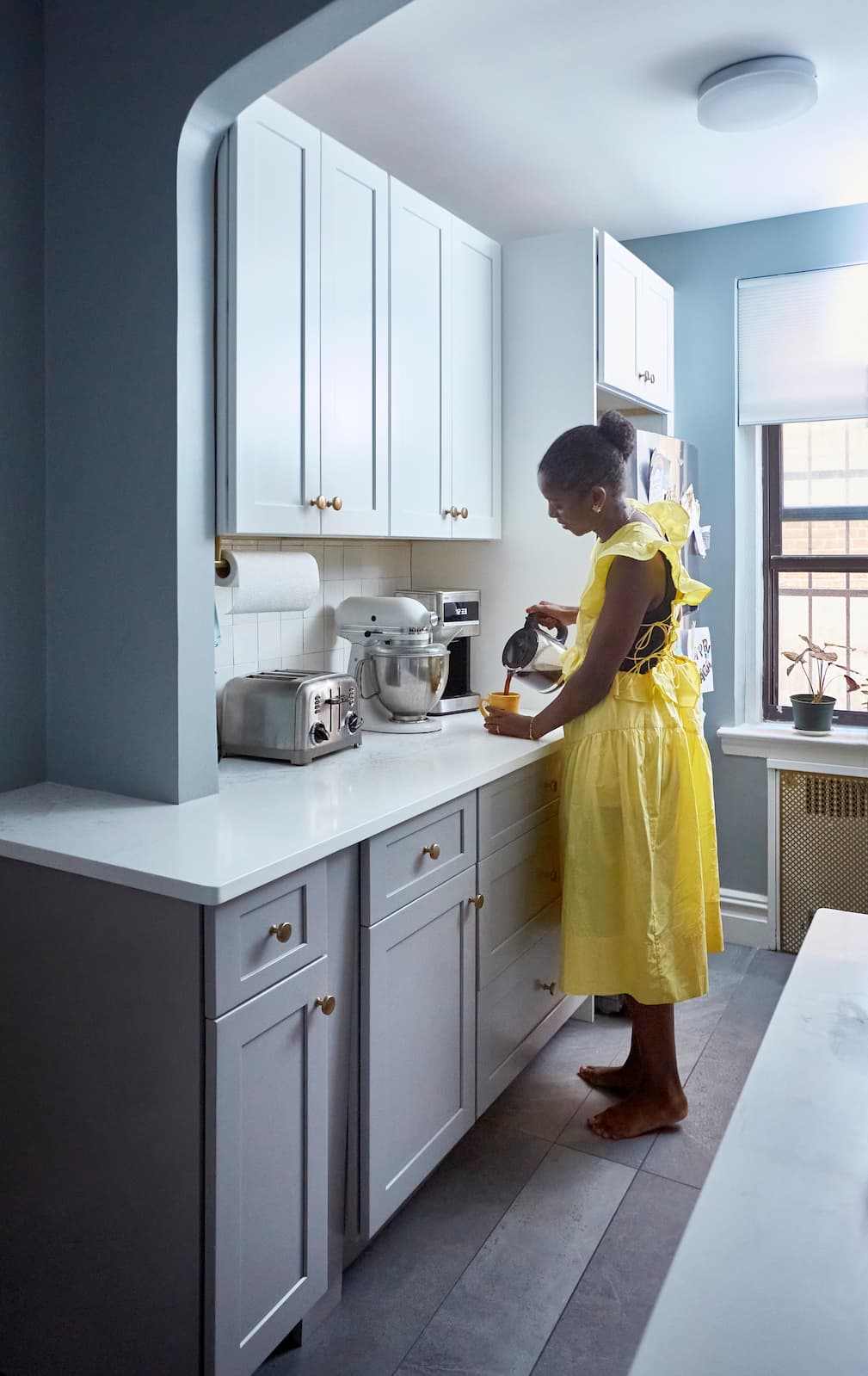
How to
How to Install an Oven
09.29.2021

In This Article
Renovate confidently with Block
Get Your EstimatesBathroom renovations are a sure fire way to increase the value of your home, but not everyone has the resources to tackle a complete gut job. Instead, small projects you can do yourself, like laying new floor tile, can go a long way in freshening up your space.
Although it’s relatively inexpensive, tiling is no small feat. It takes practice. Still, if you’re feeling adventurous, these tips will help you learn how to tile a bathroom floor in nine simple steps.
It may not be the most fun or rewarding step, but planning is probably one of the most important steps to properly tiling your bathroom floor. Here are a few questions to ask yourself before you dive into your project:
Make sure you have everything ready to go before you start. Here’s a list of the tools & materials you’ll need:
A typical bathroom floor installation can be completed in a single weekend. So gather your gear and let’s get started.
Use your tape measure to determine how much grout, tile and backer board (which is commonly used as a tile base on plywood or subfloor) you’ll need to cover the space. It’s always wise to buy a little extra tile, just in case you make a mistake or some of the pieces get damaged.
Lay your backer board first so the tile has something to hold on to. Using your circular saw, cut the backerboard into panels. Use ya jigsaw to cut out the pre-measured areas for the toilet and other fixtures.
Use your drill and backer board screws to secure the sub-flooring. Space screws about 6 inches apart and be sure they’re laying flat against the floor.
Before you start permanently attaching your tiles, practice laying them out on the floor first. Start at the edges and use as many full tiles as you can to cover as much floor as possible. Don’t forget to use your tile spacers. Now measure the tiles that need to be cut to size.
Using your tile saw, cut the pre-measured tiles to complete your bathroom floor. Remember: measure twice, cut once!
Lay all the tiles down to be sure you’ve cut them and spaced them properly. Once you’re sure the design is ready, remove the tiles and prep the floor.
Using your notched trowel, apply a thin layer of mortar to small sections of the sub-floor. Lay one tile at a time using your spacers to hold them in place. Once all the tiles have been laid, wait 24 hours for the mortar to dry.
Now that the mortar is dry, you can remove the spacers and apply the grout to fill the space between tiles. Before it sets, use a wet sponge to wipe away any excess so the floor is smooth and clean. It’s important to remove all the extra grout before it dries or it will leave your tile looking and feeling rough. Let the grout set for 24 hours before walking on your floor.
Time for the final touch! Make sure the grout is completely dry then add the grout sealer to protect it from staining, mold, and other damage.
That’s it! You’ve successfully learned how to tile a bathroom floor.

Renovate confidently with Block
Easily compare quotes from top quality contractors, and get peace of mind with warranty & price protections.
Thousands of homeowners have renovated with Block

4.5 Stars (100+)

4.7 Stars (100+)

4.5 Stars (75+)

How to
How to Install an Oven
09.29.2021

How to
How To Install A Tile Backsplash
09.17.2021

How to
How to Tile a Bathroom Floor in 9 Easy Steps
12.22.2020

How to
How to Install a Bathroom Vanity
12.22.2020
Renovate confidently